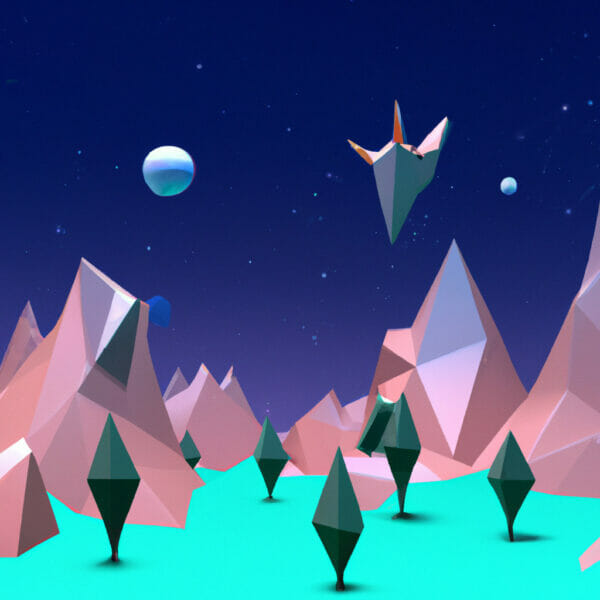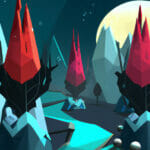If you’re venturing into the exciting world of Roblox game development, understanding Lua plugins is vital. These handy tools expand your capabilities, making the creation process smoother, without necessarily requiring extensive coding experience.
Table of contents
What are Roblox Lua Plugins?
Roblox Lua Plugins are script extensions, created using LUA scripting language, that enhance the Roblox Studio’s functionality. They function like add-ons, providing extra features such as building tools or utilities to simplify your game development process.
Why Learn About Roblox Lua Plugins?
Learning to utilise Lua Plugins can significantly improve your Roblox development experience. They can:
- Automate repetitive tasks, enabling faster development.
- Provide additional functionalities not readily available in the base Robox Studio.
- Customize your Roblox Studio environment to suit your specific development needs.
The Beneficial Versatility of Lua Plugins
By giving you control over customising your workspace, Lua Plugins accentuate Roblox Studio’s versatility. They can be shared among different projects effortlessly, enabling you to create, modify and share your plugins. They’re an effective way to save time and enhance your game creation process.
Creating a Basic Lua Plugin
Creating a Lua Plugin starts in the Plugin section of the Roblox Studio. Let’s begin with a simple example:
-- create a toolbar
local toolbar = plugin:CreateToolbar("My toolbar")
-- create a button
local button = toolbar:CreateButton("My button", "This is my button", "rbxassetid://0")This simple plugin creates a toolbar named “My toolbar” and a button named “My button”. When hovered over, a tooltip (“This is my button”) appears. The last argument represents the button’s icon as an asset ID.
Adding Functionality to the Button
To add functionality to the button, we use the mouse button click event. Here is how you would print a simple message (“Button clicked”) to the output window when the button is clicked:
button.Click:Connect(function()
print("Button clicked")
end)Building a Plugin Using Dockwidgets
Plugins often need custom interfaces. The Dockwidget Plugin Gui allows us to create these. The following code creates a very basic interface:
local dockWidgetPluginGuiInfo = DockWidgetPluginGuiInfo.new(
Enum.InitialDockState.Float, -- Initial dock state can be left, right or float.
true, -- Show the Gui once its initialized
false, -- Override the previous setting once a user changes it
200, -- Default width of the floating window
300, -- Default height of the floating window
150, -- Minimum width of the window
150 -- Minimum height of the window
)
local widget = plugin:CreateDockWidgetPluginGui("My Widget", dockWidgetPluginGuiInfo)
widget.Title = "My Widget"This code creates a floating dockwidget GUI that appears when the plugin is initialized, with a default size of 200×300 pixels and a minimum size of 150×150 pixels.
Creating Ui Elements in the Dockwidget
Just as with standard game GUIs, elements are created in the Dockwidget with the ‘Instance.new’ function:
local textbox = Instance.new("TextBox")
textbox.Parent = widgetThis example creates a textbox and parents it to our previous widget. Now, when we open the plugin, we’ll see our textbox inside the Gui.
Interacting with the User Through Textbox
You often need to interact with the user. Let’s show a “Hello, World!” message to the textbox whenever the user clicks our button:
button.Click:Connect(function()
textbox.Text = "Hello, World!"
end)Now when our button is clicked, we’ll see the message “Hello, World!” in our textbox.
Reacting to User Input in Textbox
If you’d like to react to user input in our textbox, you can use the ‘FocusLost’ event. It fires when the user stops typing:
textbox.FocusLost:Connect(function()
print("User typed: ", textbox.Text)
end)Now, whenever the user types something in the textbox and then clicks away, what they wrote gets printed to the output window. This could be used to get information from the user, for example.
Creating a Frame for More Options
You might need more complicated UIs, for which frames can be useful. Here, we create a frame and two buttons inside it:
local frame = Instance.new("Frame")
frame.Parent = widget
local button1 = Instance.new("TextButton")
button1.Size = UDim2.new(0.5, 0, 1, 0)
button1.Parent = frame
local button2 = Instance.new("TextButton")
button2.Position = UDim2.new(0.5, 0, 0, 0)
button2.Size = button1.Size
button2.Parent = frameNow when you open the widget, you’ll find two buttons taking up the whole space.
Implementing Button Functionality
You could use these buttons to switch between different views or functionality. Here’s how you might switch the textbox’s message:
button1.Click:Connect(function()
textbox.Text = "Button 1 was clicked!"
end)
button2.Click:Connect(function()
textbox.Text = "Button 2 was clicked!"
end)Now, whenever you click either of the buttons, the textbox’s text updates to reflect your choice.
As you can see, Lua Plugins provide a powerful way to make developing in Roblox much easier and intuitive. It lets you automate tasks, create custom UIs, and make Roblox adapt to you, rather than the other way around. We recommend honing your skills with Lua Plugins – it’ll be a beneficial tool in your developer toolkit.
Creating a Scrolling Frame
If we reach a point where we have too many elements for our widget’s dimensions, we need a Scrolling Frame. This allows us to scroll through our elements:
local scrollingFrame = Instance.new("ScrollingFrame")
scrollingFrame.Size = widget.AbsoluteSize
scrollingFrame.CanvasSize = UDim2.new(0, 0, 0, 500) -- This should be modified based on the number of elements
scrollingFrame.Parent = widgetThis code creates a Scrolling Frame of the same size as the widget, with a canvas size of 500 pixels in height. Anything you want to be scrollable should now be parented to the Scrolling Frame instead of the widget.
Listening to the Plugin’s Deactivation
Plugins can also be deactivated, to which we might need to react. This could happen if the user clicks outside the plugin UI or starts using another tool. Here, we print to the output window when the plugin gets deactivated:
plugin.Deactivation:Connect(function()
print("Plugin deactivated!")
end)Adding Elements to Scrolling Frame
Let’s add multiple text boxes to our scrolling frame, placing them below each other:
for i = 1, 10 do
local textbox = Instance.new("TextBox")
textbox.Size = UDim2.new(1, 0, 0, 30)
textbox.Position = UDim2.new(0, 0, 0, (i - 1) * 30)
textbox.Parent = scrollingFrame
endThis script creates ten text boxes of 30 pixels in height each. They’re positioned below each other with the loop index (‘i’). Now, our Scrolling Frame has become scrollable.
Dealing with Player Input
If having to manually trigger an event sounds tedious, worry not. Lua plugins allow us to listen for player input:
game:GetService("UserInputService").InputBegan:Connect(function(input)
if input.KeyCode == Enum.KeyCode.F1 then
if widget.Enabled then
widget.Enabled = false
else
widget.Enabled = true
end
end
end)Now pressing the F1 key toggles the widget’s visibility. Lua plugins really offer a
vast array of customisations and flexibility while creating Roblox games!
In conclusion, learning and incorporating Roblox Lua Plugins in your workflow will save time, enhance your game creation process, and empower you to develop more complex and engaging games. Cementing your understanding of Lua Plugins will undoubtedly level up your Roblox game development skills.
We hope this tutorial has sparked your curiosity and equipped you with a basic understanding of Lua Plugins in Roblox Studio. Of course, this is just a stepping stone in your game development journey. Remember that learning is an ongoing process and the most effective way to learn is through practical experience.
To continue bolstering your skills, we invite you to explore our comprehensive Roblox Game Development Mini-Degree. This collection of courses offers in-depth tutorials on diverse game genres, including obstacle courses, melee combat games, and FPS games. You will acquire vital skills such as crafting multiplayer functionality and leaderboards. Whether you’re an absolute beginner or have some coding experience, this curriculum will meet you where you’re at, setting you on the path to becoming a professional game developer.
Moreover, you can broaden your knowledge base with our robust collection of Roblox courses. With a wealth of content on offer, you can go from beginner to professional at your own pace, gaining valuable knowledge and experience. At Zenva, we are committed to supporting you on your learning journey, ensuring you have access to high-quality courses that will boost your career.
Conclusion
Mastering Roblox Lua Plugins can greatly enhance your game development capabilities, making the creation process more effective, joyous, and immersive. By automating tasks, introducing custom UIs, and making the Studio adapt to your needs, you can become a more productive and innovative game developer.
We invite you to continue your exploration with our Roblox Game Development Mini-Degree. Here at Zenva, we offer high-quality courses that are meticulously created for the sole purpose of upgrading your skills into the realm of professional game development. Let’s begin this fascinating journey together!
Did you come across any errors in this tutorial? Please let us know by completing this form and we’ll look into it!

FINAL DAYS: Unlock coding courses in Unity, Godot, Unreal, Python and more.







